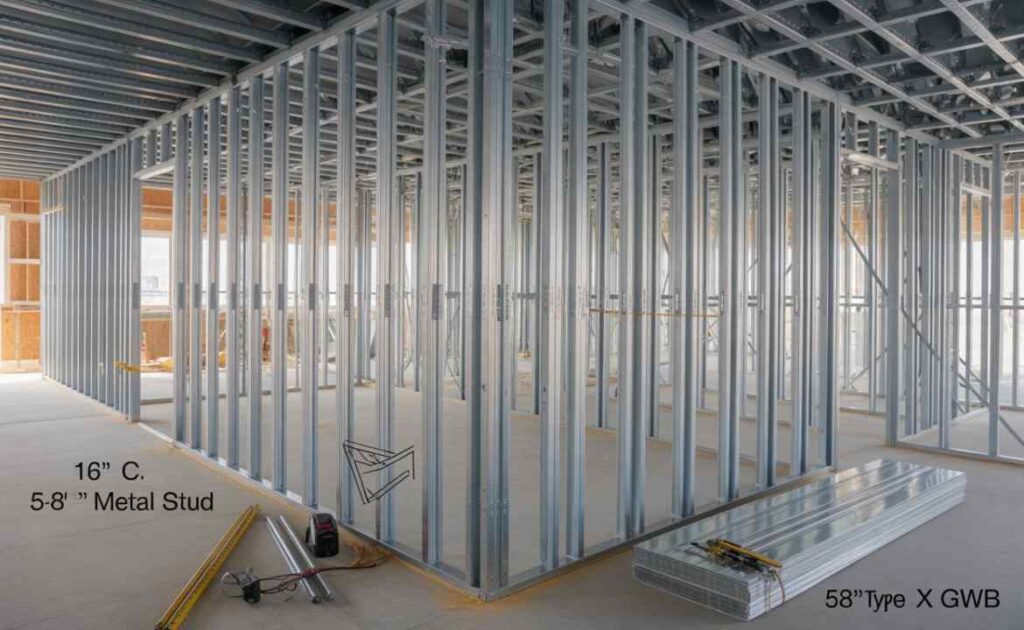Referring to what is a demising wall typically happens when someone is signing a new commercial lease and starting to understand where their official space will be for the boundary purposes. A demising wall is the physical wall that separates one unit from another unit, or from common space parts within the building. This is the point that defines space boundaries lease, which is used for landlords to calculate square footage, lease responsibilities and maintenance rights. This system offers a sense of isolation for each business, granting the ability to function independently, even within a single building.
Demising Wall Definition and How it Works
Demising wall definition describes a solid internal divider constructed to ensure the safety and Privacy of different tenants in the same building. This type of wall needs to be strong enough to absorb the impact and intruding sounds of daily activities. In strip malls, office complexes, medical plazas, and apartment buildings, where multiple people are landlords, such type of tenant separation wall becomes crucial in providing peace to an otherwise noisy working environment. In such scenarios, the future use of the space determines the thickness, the construction material, and the combustibility.
The Importance of Fire-Rated Protection and Safety
Sometimes a demising wall needs to act as a fire-rated partition to contain the spread of fire and smoke between units. When a business has a fire emergency, this wall literally saves the lives of people in the adjacent units, allowing critical time for evacuation. The fire-resistance layers and the loss containment strategies assist in meeting the national codes and protecting the property. Adding insulation allows the wall to also perform as an acoustic separation for high-noise environments like gyms or restaurants.
Commercial Building Construction and Code Requirements
Engineers design every demising wall as a part of a larger commercial building partition system. For these walls, materials commonly include metal framing and multiple layers of drywall sealed at the edges to close any gaps. The wall also frequently serves as part of the structural partition system which adds strength to the building interior. Architects must analyze occupancy separation depending on how the tenants will use their spaces. The wall ratings required for a quiet law office will need to be different than those for a store with heavy equipment and high heat exposure.

Where Demising Walls Are Used and Why They Matter
For commercial properties, a robust boundary wall is essential for property owners. These walls reduce disputes over noise, privacy, and unauthorized access. Businesses that require a high degree of confidentiality, such as clinics and financial offices, benefit from privacy wall architectural design when meeting clients. Keeping tenants separated not only increases comfort and safety but also improves enforceability of leasing agreements.

Demising Walls in Tenant Improvement Construction
Whenever units change hands, new tenants commonly request renovations. Renovation teams must follow tenant improvement construction rules when modifying or connecting to demising walls. Cutting openings without permission may compromise safety, violate building code fire rating compliance, and harm structural integrity. Planning and permit acquisition are essential to maintain trust between landlords, contractors, and new tenants.
A demising wall supports three major goals in a shared building. It defines the correct leasehold demarcation so every business knows its own area. It provides durable material separation to keep noise, hazards, and operations controlled. It meets fire safety codes that protect buildings everywhere in the United States. Whenever someone asks about what is a demising wall, the simplest answer is that it ensures privacy, stability, and legal clarity inside any multi-tenant property.
Meta Discription
Learn what a demising wall is, how it defines commercial lease boundaries, and why fire safety, noise control, and code compliance matter in U.S. tenant spaces.

